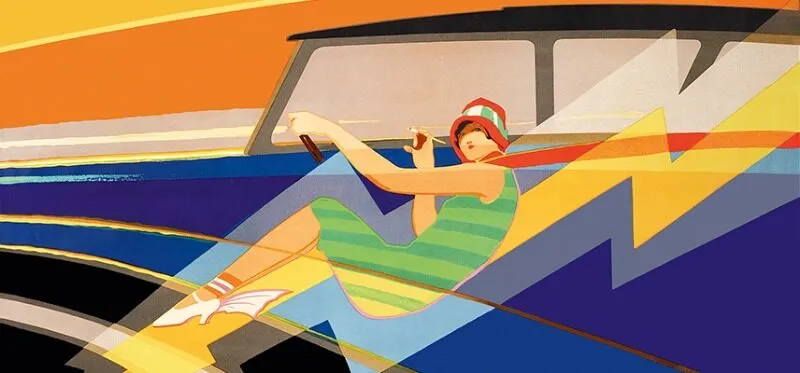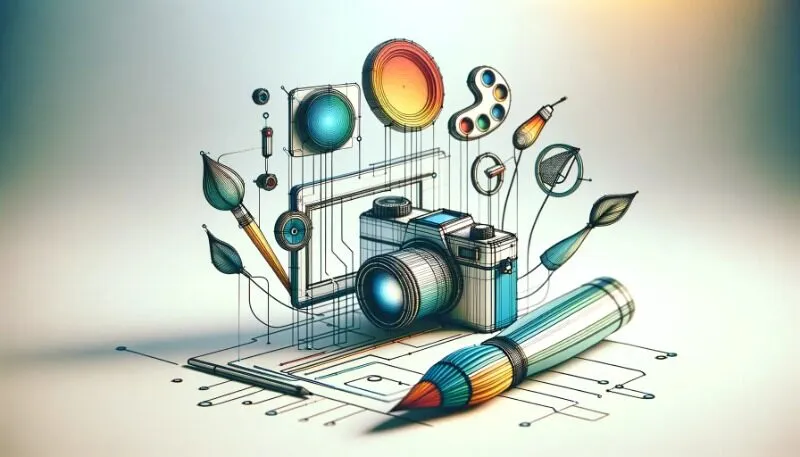In today’s world, advertising is everywhere. But not all ads are memorable. To stand out, brands need more than just catchy slogans or flashy visuals – they need to make an emotional connection with their audience. That’s where art comes in. By combining art and advertising, brands can create powerful campaigns that stick with people long after they’ve seen them. Let’s explore how art can transform advertising and make a lasting impact.
The role of art in advertising
Art and advertising have a lot in common. Both are about telling a story, evoking emotions, and connecting with people. When used in advertising, art becomes more than just decoration. Whether it’s through painting, photography, or digital design, art brings a fresh perspective to advertising that can cut through the noise of everyday marketing.
The interpretation of art within the realm of advertising
In advertising, art isn’t just about looking pretty. It’s about interpreting a brand’s message and values in a way that feels authentic and compelling. Artistic elements can be used to evoke certain feelings or create an atmosphere that aligns with the brand’s identity. For example, a soft, watercolor painting might be perfect for a beauty brand that wants to convey elegance and tranquility, while bold, abstract art could be ideal for a tech company that prides itself on innovation.
Emotional connection
One of the biggest reasons to combine art and advertising is the emotional connection it creates. Art has the power to make people feel something, whether it’s joy, nostalgia, or inspiration. When brands tap into these emotions through artistic advertising, they’re able to build a deeper connection with their audience. People are more likely to remember a brand that makes them feel something, and that’s where art truly shines.
Creativity and innovation
Art brings a level of creativity and innovation that standard advertising often lacks. While traditional ads may rely on tried-and-true formulas, art allows for experimentation. It pushes boundaries and invites people to see things in a new way. By incorporating art into their campaigns, brands can surprise and delight their audience, standing out in a sea of similar ads.
Benefits of combining art and advertising
The combination of art and advertising isn’t just about creating something beautiful – it comes with real benefits for brands.
Enhanced brand identity
When art is used in advertising, it helps to enhance a brand’s identity. Artistic campaigns allow brands to showcase their personality in a way that feels unique and authentic. It gives them a voice that’s different from their competitors. Art can help a brand tell its story more effectively, creating a visual identity that resonates with consumers.
Increased consumer engagement
People are more likely to engage with advertising that feels artistic and thought-provoking. Instead of just scrolling past an ad, they might stop to appreciate the artistic elements, share it with friends, or even interact with it in some way. When consumers engage with a brand’s advertising on a deeper level, it leads to greater brand loyalty and even increased sales.
Memorability and longevity
Ads that combine art and advertising tend to be more memorable. Think about iconic ad campaigns from the past – many of them featured artistic elements that made them stand out. These types of ads not only stick in people’s minds but also have the potential to be remembered for years to come. This kind of longevity is invaluable for a brand looking to create a lasting impression.
Practical ways to combine art and advertising for maximum impact
There are many practical ways to combine art and advertising, and it’s not as difficult as you might think.
Collaborating with artists
One of the most effective ways to combine art and advertising is by collaborating with artists. Brands can work directly with painters, sculptors, illustrators, or digital designers to create unique campaigns that reflect both the artist’s vision and the brand’s message. These collaborations can lead to unexpected and innovative results, giving the brand an edge over its competitors.
Merging visual narratives with promotional strategies
Another way to combine art and advertising is by merging visual storytelling with traditional promotional strategies. Instead of just focusing on selling a product, brands can use artistic visuals to tell a story. This could be through a series of paintings, an animated short film, or even a live art installation. By focusing on the narrative, the brand can create a more immersive and engaging experience for its audience.
Exploring various artistic mediums in advertising experimentation
Brands shouldn’t be afraid to experiment with different artistic mediums. Whether it’s photography, video, sculpture, or digital art, each medium offers something unique. By trying out different forms of art, brands can discover new ways to connect with their audience and express their message. For example, a fashion brand might use photography in a way that feels like high-end editorial art, while a tech brand might experiment with 3D digital art to showcase its cutting-edge products.
Challenges and considerations
While the combination of art and advertising offers many benefits, there are also challenges to keep in mind.
Balancing art and commercial goals
One of the biggest challenges is finding the right balance between art and the commercial goals of the campaign. At the end of the day, advertising is about selling a product or service. It’s important that the artistic elements don’t overshadow the brand’s message. There needs to be a clear connection between the art and the product, so that the ad feels cohesive and effective.
Staying true to the brand
Another challenge is staying true to the brand’s identity. While art allows for creativity and experimentation, it’s important that the campaign still aligns with the brand’s core values and message. A campaign that feels too far removed from the brand’s identity can confuse consumers and weaken the overall impact of the ad.
Budget constraints
Lastly, there’s the issue of budget. Artistic collaborations and experimental campaigns can be more costly than traditional advertising methods. Brands need to consider whether the investment in art will pay off in terms of consumer engagement and sales.
That being said, even on a limited budget, there are ways to incorporate art into advertising without breaking the bank – like working with emerging artists or using digital platforms to create low-cost, high-impact visuals.
Conclusion
Combining art and advertising is a powerful way to create campaigns that stand out, connect emotionally with consumers, and leave a lasting impression. By working with artists, exploring different mediums, and balancing creativity with commercial goals, brands can use art to amplify their message and make a bigger impact.


